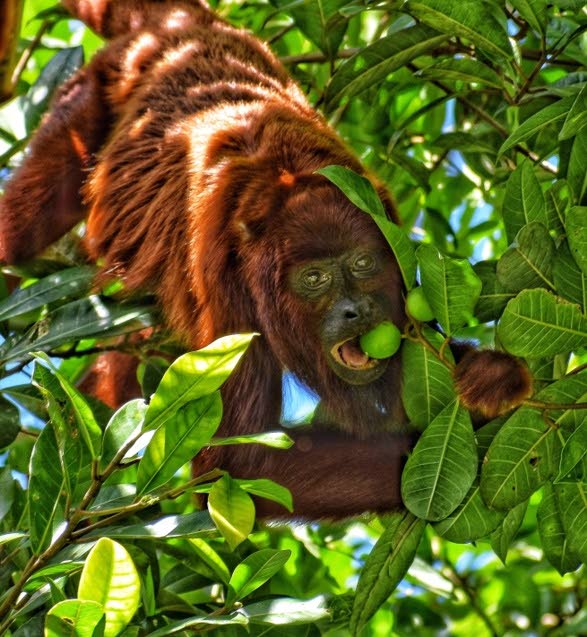By Newsday Reporter
Copyright newsday

Anjani Ganase invites aspiring scientists, biologists, botanists and families interested in the natural world to join or observe this year’s census of species living on Trinidad’s North Coast. Bioblitz 2025 in TT takes place September 20-21 based at the Maracas Bay Community Centre.
The first time I participated in Trinidad and Tobago Bioblitz was in 2018 at Toco. I had just returned home after living abroad for over six years, and it was the perfect opportunity to get re-acquainted with why I got into marine science in the first place. What I didn’t expect was the enthusiasm and being immersed in a community of passionate naturalists. While some were scientists formally trained in biology and ecology and others self-taught taxonomists, all were experts gathered for the one mission, to identify every living creature – from fungus to fish – within a five kilometres radius around the Toco community centre (base camp) over 24 hours – aka Bioblitz.
I may have volunteered as a marine expert, but I spent the weekend as a student in one of the most engaging classrooms of my life with the best teachers and explorers in my country. Six years later, I am finally able to volunteer at another Bioblitz event centred on the popular north coast destination Maracas. The location is iconic, and as a weekend hiker, driving through the Northern range, I always stare in wonder of the beauty of the mountain range and the majestic El Tucuche on one side and the alluring views of Maracas and Las Cuevas Bays on the other. The bays and coves nestle in a rich array of forest, cliff, and coastal and riverine ecosystems. This year, the island’s most visited weekend beach getaway becomes the perfect setting for Bioblitz.
“The area around Maracas includes a wide range of marine, river and forest habitats and we will have teams snorkelling and hiking in as many of them as possible. Excitingly we will be surveying the high elevations of El Tucuche, and hopefully recording species that are only found here – such as the endangered golden tree frog,” says Dr Amy Deacon, zoologist in The UWI’s Department of Life Sciences, and the scientific coordinator.
Base camp Maracas
This year, base camp will be at the Maracas Community Centre, and on September 20 at 12 noon sharp the survey will begin and continue for 24 hours. TT’s Bioblitz is organised by the Trinidad and Tobago’s Field Naturalists’ Club (TTFNC) and the Department of Life Sciences, The University of the West Indies, with sponsorship from First Citizens Bank. In its 14 consecutive years of ‘bioblitzing’, the census has gathered over 200 dedicated volunteers to the annual event. The survey area encompasses both Maracas and Las Cuevas Bays, and extends to the upper reaches of Maracas Valley and El Tucuche. Survey groups include teams dedicated to finding fungi, mammals, plants, marine and freshwater species, herpetology (amphibians and reptiles), invertebrates (insects, spiders), birds and even microbes. Activities will include snorkelling, river seining, and daytime and night time hiking. Volunteers will learn methods in surveying and be shown the tricks to species identification.
“Each year the bioblitz reveals something new – moths, plants, or even frogs found far beyond their expected range. I can’t wait to see what surprises this year holds.” says Saifudeen Mohammed, co-leader of the Herpetology Team.
Local residents and science experts
Critical to the event is connecting with the communities who work and live in the area, as their local knowledge is vital, and the cycle of knowledge sharing is completed from the visiting experts to the residents. The teachings of Bioblitz extend beyond those 24 hours, research interests are sparked, knowledge shared is passed around, and the data collected serves as a repository for education and conservation. A tool that is key to the event is the citizen science app called iNaturalist. This online tool works in real time to log species encountered, and serves as an online encyclopaedia that is part of the global network of species lists that includes other Bioblitz events happening elsewhere in the world. If you cannot identify a species, no problem, photos uploaded to iNaturalist allows for crowd identification by experts and enthusiasts all over the world.
The second day will feature live displays of what was or is common to the area, and educational activities guided by local environmental NGOs to engage and build awareness. If you decide to visit, you must stick around for the final tally. I distinctly remember the buzz when I returned to base camp in the last hour of survey as species numbers came rolling in. Till the last minute, groups huddled together to urgently identify what insects or plants remained. Photos are frantically waved in faces, what kind of sea urchin is this? Deacon, the scientific coordinator for Bioblitz, is front and centre waiting to write the initial numbers on a white board, and the final roaring cheer erupting with the final tally and another Bioblitz complete.
This year’s Bioblitz is probably the closest it’ll ever be to being in my “backyard” and although I’m not competitive, we can only hope we get more than last year’s tally, which was 960 species surveyed in Guayaguayare.
Anyone can volunteer at the TT Bioblitz in Maracas. Simply register to participate in the surveys using the following link: at https://tinyurl.com/ttbioblitz2025 Make sure to select the groups that you’re most interested in joining. Or simply come along to the base camp on Sunday morning to experience the live displays and family activities first hand.



